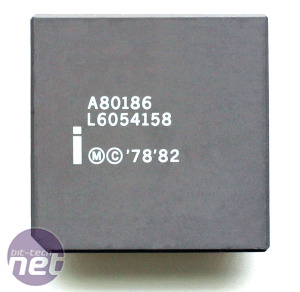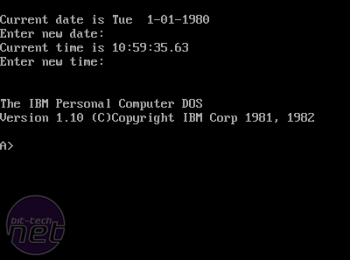Dossing Around
As well as the hardware, the PC had to have a self-contained operating system of its own, and this presented a problem. ‘IBM didn’t have time to write one,’ explains Muldoon, ‘so it went out to various people, including Digital Research for CP/M. Digital Research didn’t return the call, but Bill Gates did.'Gates didn’t have an operating system, so he bought QDOS and then went up to IBM and said, here you are – at least, that’s the story.'
‘The original DOS was a tarted-up QDOS, supplied to IBM, so there was IBM Personal Computer DOS.
'Gates was allowed to sell Microsoft DOS (MS-DOS), and it carried on for many years with exactly the same numbers. So [version] 1.1 was DOS 1 but with support for us foreigners, then we went to DOS 2 with support for hard disks, DOS 2.1 for the Junior, and later the Portable PC, as they had different disk drives and so on.
Muldoon’s personal opinion is that allowing Gates to retain the intellectual property for the operating system was a mistake. ‘So we now have an Intel processor, which is tied to Intel, and we have another guy who owns the operating system,’ he points out, ‘so you’ve already lost control of your whole machine around 1981 – the rest is history.’
IBM’s senior sales consultant Tikiri Wanduragala, who started at IBM around the time that it introduced the PC XT, sheds some more light on this situation, however. ‘At this same time, there were anti-trust cases going on,’ he explains.
‘You can’t make decisions where you appear to be doing certain things. So it’s easy to say that was a mistake, and this was a mistake,’ he continues, ‘but trying to own everything on a product wasn’t the smartest thing to do at that point. Business decisions went wider than just the product – at that time we had a very large number of shares in Intel, for example.’
What Happened to the 186?
 There’s a glaring omission in the PC’s processor history during the 1980s – the 80186 processor, or 186 for short. We move from the 8088 and 8086 to the 286 – why wasn’t there a 186? In fact, Intel did create a 186 processor, which introduced more instructions to the architecture. However, it wasn’t compatible with the IBM PC architecture, so it was only used in a few embedded devices.
There’s a glaring omission in the PC’s processor history during the 1980s – the 80186 processor, or 186 for short. We move from the 8088 and 8086 to the 286 – why wasn’t there a 186? In fact, Intel did create a 186 processor, which introduced more instructions to the architecture. However, it wasn’t compatible with the IBM PC architecture, so it was only used in a few embedded devices.Interestingly, ex-IBM veteran Terry Muldoon says he heard an amusing story, which may or may not be entirely true, about why the 186 wasn’t compatible with the PC. ‘When it was designing the PC, IBM used some of the reserved Intel interrupts,’ he explains.
‘However, when Intel was developing the 186, the IBM rep wasn’t there on the day that they discussed the interrupts, and they then used up some of their reserve interrupts that were also used by the IBM PC. So although it became a good embedded processor, you couldn’t use it for the IBM PC, since there would have been an interrupt clash.’

MSI MPG Velox 100R Chassis Review
October 14 2021 | 15:04










Want to comment? Please log in.